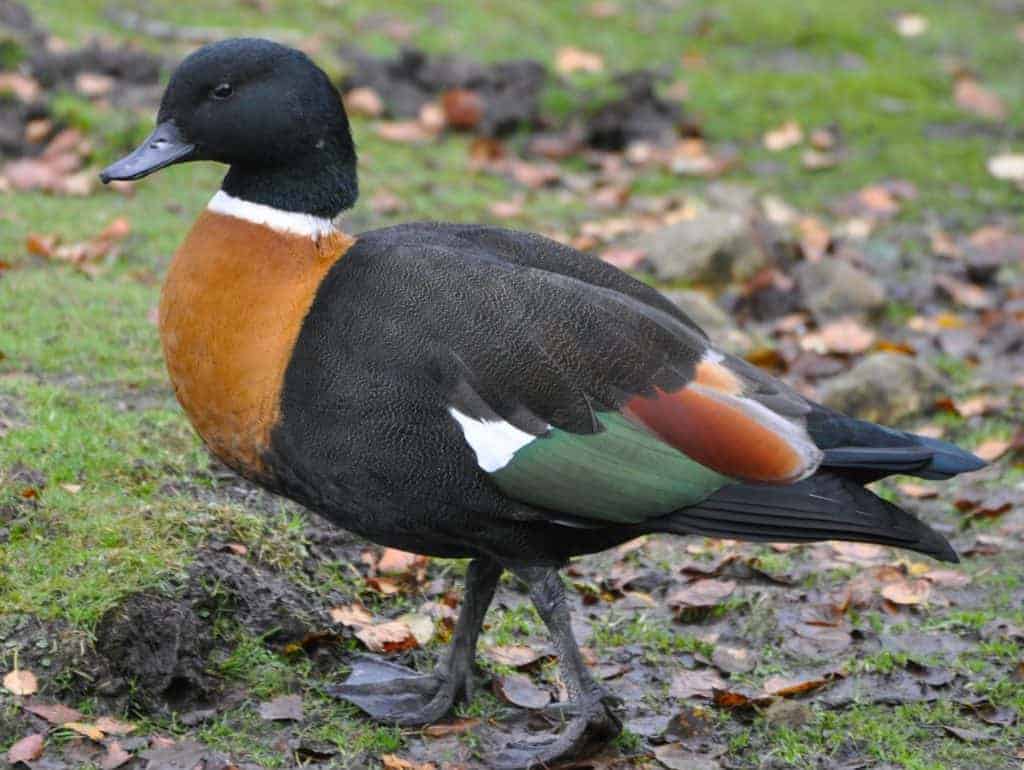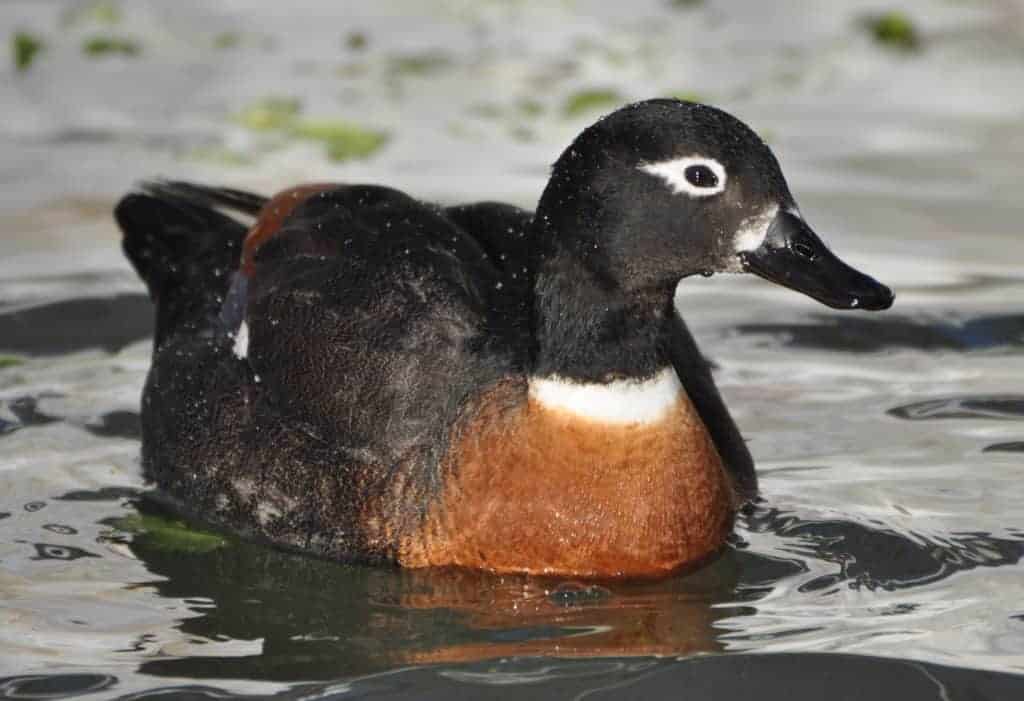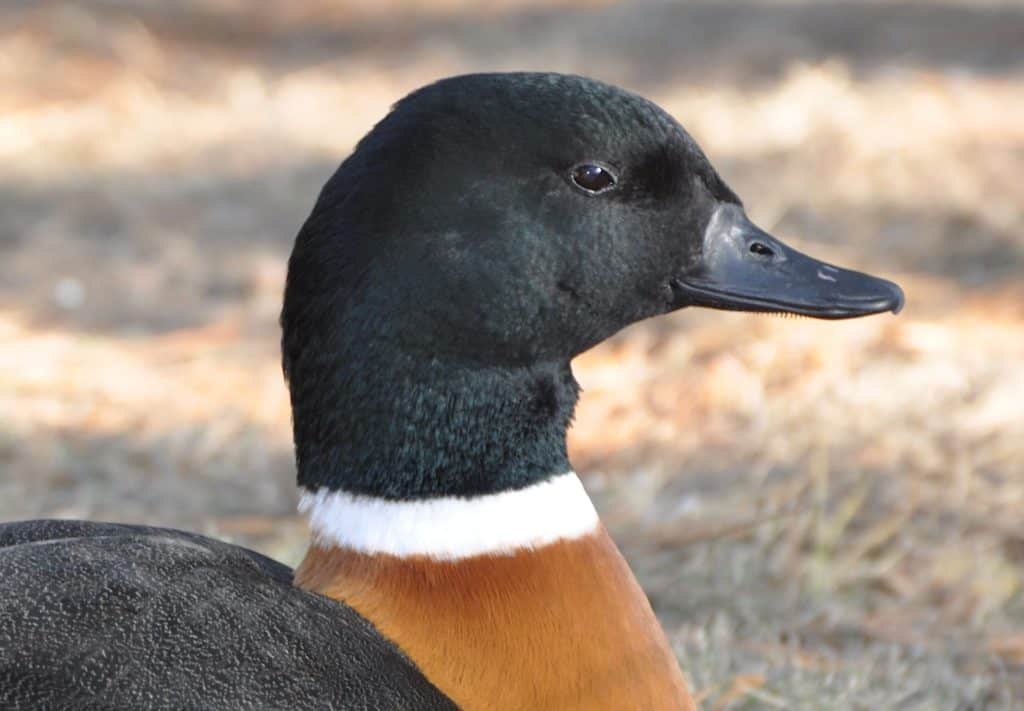Australian Shelduck


Tadorna tadornoides
Large and handsome, the Australian Shelduck is an endemic of southern Australia where it favours freshwater swamps and lakes. They are also seen on the coast after nesting has finished. Invariably seen in pairs (having long-term pair bonds), they join together in large flocks after breeding. The sexes are similar, with predominately blackish plumage contrasting with a smart chestnut breast. Both sexes have a white neck ring, but only the female has white around the eye and at the base of the beak.

Like all the shelducks, they need plenty of space in collections, though they have a reputation for being much more peaceful with other ducks than the notoriously aggressive Paradise Shelduck from New Zealand. However, some individuals are much more quarrelsome than others. In the wild they nest in hollow trees or holes in banks, but in captivity they will readily use suitably positioned barrel nest boxes. The female can be reliably left to incubate her eggs, and the pair make attentive parents. Australian Shelduck are one of the nosiest and most vocal of all wildfowl.
Australian Shelduck line their nests with down. Usually mature aged two, 8–14 creamy-white eggs are incubated for 30 to 33 days. The duck does the incubating, but the drake participates in tending the young.
This is a species which can be badly affected by imprinting on humans; shelduck can become particularly aggressive as adults. Thus we recommend minimising contact in the early stages of rearing, and letting the adults do the work.
FURTHER READING
Atlas of Living Australia species page: Tadorna (Casarca) tadornoides
BirdLife International (2021) Species factsheet: Tadorna tadornoides. datazone.birdlife.org/species/factsheet/22680011